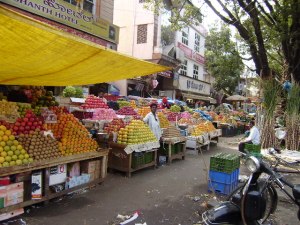During my vacation, I finished reading Salil Tripathi’s Detours, an enhanced collection of his columns in Mint Lounge of the same name. I quite liked the book. In fact, I liked it much more than his columns in Mint Lounge. I think the lack of word limit constraints meant he could add depth when necessary making it a steady and pleasing read (read Sarah Farooqui’s formal review of the book here).
In one of the chapters, he describes Paris in the way Hemingway saw it (literature and art are constant figures in this book, and the fact that I could connect to it (the book) despite my general lack of interest in these topics speaks volumes about the quality of the book). More specifically, this is about the Shakespeare and Company bookshop in Paris where Hemingway occasionally lived, and wrote his books.
George Whitman, a US army veteran who settled down in Paris after the Second World War, bought the store and ran it until his death. During these years, he hosted writers who wanted to visit Paris in an upstairs room, allowing them to basically live in the store as they wrote. There were frequent readings organised in the store where writers could connect with their readers, and writers and other regular patrons were frequently allowed to use the bookshop as a library – to simply read rather than buy books.
There was an occasion when Whitman’s store license ran out and he got into a dispute with the municipal authorities who refused to renew it, to which he responded by stopping the sale of books and running the shop as a library until the license was ultimately renewed.
While Salil describes this as a measure of Whitman’s commitment to good literature and helping authors, it was hard for me to read this chapter without wondering about Whitman’s finances, for none of the above is cheap. One of the biggest costs to running a bookshop is the cost of real estate, and if Whitman had an upstairs room for writers to live and write in, and could redeploy his shop as a library, it came at a significant cost of real estate. While readings might help sell additional books (most readers who attend buy at least a copy of the book that is being discussed), it can disrupt the regular flow of business in the store, and affect sales. The question that I couldn’t escape while reading the book was about the store’s finances and how Whitman managed all these activities.
One hypothesis is that he had alternate sources of funding (patrons of literature’s contributions, or family funds, for example) that allowed him to spend in writer welfare. The other is that margins from the book selling business were fat enough to allow Whitman to spend on writer welfare, and this spending paid him back by way of improving overall sales from his store. Back in the day when you could only buy books from shops, shops that curated well or stocked rare books could afford to charge a premium, and make significant margins which could go into activities such as writer promotion and welfare.
If this hypothesis is correct, it could explain why the traditional literature industry, including authors, are so incensed by Amazon’s rise, even if it leads to significantly better revenues. What Amazon allowed, by its initial print book mailing model, was for readers to access the “long tail” of books which they could purchase at a reasonable cost (they weren’t beholden to curator-bookseller any more). While the more passionate readers remained loyal to their curator-bookseller, the mass moved to the cheaper option.
While this created value for readers (in terms of lower prices for their books), it had the effect of cutting retail margins for books by a significant amount. Several bookshops became unprofitable under this new regime, and with the new margins not compensating for increasing real estate costs, many of them (including chains such as Borders) closed down. Writers weren’t directly affected economically – for readers who would have earlier purchased in such shops could now simply purchase the same books at Amazon for a lower price, but the dropping profitability of conventional bookstores affected them in other ways.
As Salil’s chapter on Shakespeare & Co illustrates, independent bookshops performed a social function far higher than curating and selling books – they provided an author a platform to connect with readers and enabled authors to meet and exchange ideas. They organised events for authors which raised their profile, and helped sell more books.
Their replacement by low-cost retailing models has cut out this additional social function they performed (without direct rewards). Without independent bookshops organising readings and offering writing spaces, writers have lost something they had access to earlier (though they’ve been monetarily compensated for this by means of higher sales driven by lower prices on Amazon). Hence it’s no surprise that writers have taken sides with their publishers in the battle against Amazon, online retailing and e-books.
In this context, this old piece by Matthew Yglesias in Vox is worth reading, where it talks about why Amazon is performing a socially useful function by curtailing the book publishing industry. Yglesias writes:
My best guess is that this is too pessimistic about the financial logic behind giving advances. It is not, after all, just a loan that you may or may not pay back. An advance is bundled with a royalty agreement in which a majority of the sales revenue is allocated to someone other than the author of the book. In its role as venture capitalist, the publisher is effectively issuing what’s called convertible debt in corporate finance circles — a risky loan that becomes an ownership stake in the project if it succeeds.

